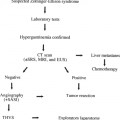
Varicoceles: A Pediatric Urologist’s Perspective
Adolescent varicoceles represent an interesting anomaly that first develops in pubertal boys; may or may not be symptomatic; and may or may not affect fertility, testicular growth, or semen quality.1–4 In some studies, only 20 to 50% of adults who have their varicocele ligated have any improvement in fertility.5 Thus, it is difficult to identify patients in whom having their varicocele ligated would aid eventual fertility and improve testicular growth. We take a conservative approach to managing varicoceles in the adolescent population. If the patient’s varicocele is symptomatic, that is, if there is any significant growth differential between the testes or if the varicocele is of significant size and causing emotional turmoil, repair is considered. Significant progress has been made in managing varicoceles. Today, the patient and parent can be offered a minimally invasive, low-risk procedure done on an outpatient basis that has results that are superior to other forms of therapy.
 Incidence
Incidence
Varicoceles occuring in asymptomatic men have been reviewed in a number of series. The prevalence in the pediatric population has been estimated to be between 6% and 15% by the age of 13 years.1 Similarly, the prevalence in a healthy adult male population has been reported to be 15% but in male infertility clinics has been reported to be as high as 40%.2 In a study done in Poland, 2100 boys between the ages of 10 and 20 were evaluated for varicoceles. In this group, 6% had detectable varicoceles, and the mean age at which these were found was 16.7 years.2 We have never encountered a varicocele in a patient younger than 12 years. Most series have relied on clinical detection by physical examination alone; however, with the increasing use of Doppler ultrasound, the incidence likely will increase.
 Detection
Detection
Most varicoceles are detected by physical examination, and the patient is usually unaware of its presence. In our practice, most varicoceles are discovered in the spring and fall, when young men are getting routine physicals for sports or camp. Most of these varicoceles are asymptomatic and, even if large, are associated with a testis of decreased size. The dilatation of the pampiniform plexus and spermatic vein gives the characteristic “bag of worms” appearance to the scrotum as seen on physical examination, typically seen when the patient is upright and nonvisible when he lies down. In patients with large varicoceles, however the dilated but empty veins are palpable even when the patient assumes the recumbent position. The grading system based on the size of the varicoceles is useful in certain settings; however, because the clinical significance of the relationship of the size of the varicocele to eventual fertility remains unclear, we have not found grading to be of any clinical help in counseling parents and patients. Rather than using the size of the varicocele as the clinical guide, the size of the testis compared with the contralateral testis and any growth discrepancy are taken into consideration. Other investigators believe all palpable varicoceles should be considered of equal significance.
 Pathophysiology and Testis Pathology
Pathophysiology and Testis Pathology
Multiple theories have been advanced to describe the mechanism by which dilatation of the internal spermatic vein damages normal testis function and causes decreased fertility. Unfortunately, none of the theories that have been advanced has been proven, and thus the true cause remains unclear. Studies in animal models have shown that a left varicocele can diminish spermatogenesis and damage the histology of the testis because of the increased testicular blood flow and temperature.3 Indeed, most clinicians now believe that the varicocele induces disturbances of the temperature regulatory system of the testis, which influences sperm development and maturation. Kass and Salisz6 elegantly demonstrated this disturbance in their work on adolescent varicoceles. They found increase scrotal temperatures associated with adolescent varicoceles and that the higher the left scrotal temperature, the greater the volume loss of the testis. After ligation of the varicocele, the scrotal temperature decreased to normal, and growth of the left testis to normal or near normal was observed.
The pathology of both testes in the patient with a varicocele is of great importance. One study showed abnormalities in the histology of both testes of men who were infertile and had undergone testicular biopsy.7 Patients who had Leydig cell atrophy showed more improvement in their semen analysis than those who had Leydig cell hyperplasia, even if tubular pathology was the same in both groups. Other studies have advanced the theory that ultrastructural changes in the Sertoli cell cytoplasm was the primary site of the changes induced by the adolescent varicocele.8 Biopsy changes in the adolescent have been found to be the same as those in the adult but not as severe.9
Stay updated, free articles. Join our Telegram channel

Full access? Get Clinical Tree



